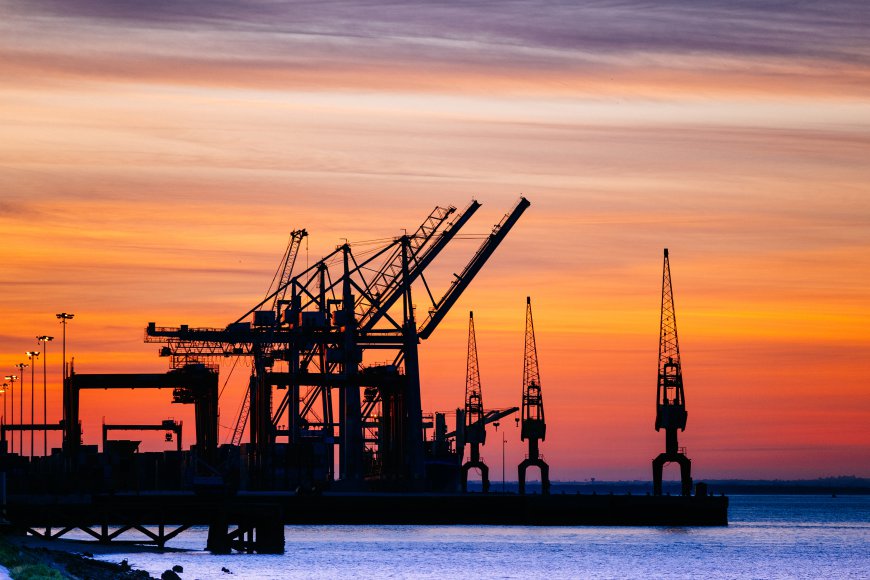Revolutionizing Oil and Gas Logistics: The Future of Terminal Management Systems with AI and IoT
The integration of artificial intelligence (AI) and the internet of things (IoT), particularly in the modernization of terminal management systems, is at the core of this revolution.

Introduction
An essential component of the world's energy supply has always been the oil and gas sector. However, even more established industries like oil and gas logistics are changing significantly as the globe embraces digital change. The integration of artificial intelligence (AI) and the internet of things (IoT), particularly in the modernization of terminal management systems, is at the core of this revolution. Efficiency, safety, and profitability are all being improved by these innovations, which are changing the way terminal operations are run.
Traditional Terminal Management's Difficulties
Although they are essential to the storage and movement of petroleum products, oil and gas terminals frequently encounter major difficulties:
Manual Processes: An antiquated, manual process that is prone to mistakes, inefficiencies, and delays is used by many terminals.
Safety concerns: Human error exacerbates the ongoing safety concerns associated with handling hazardous chemicals.
Absence of Real-Time Data: Inadequate knowledge of equipment condition, inventory levels, and transportation logistics can cause expensive hiccups.
Environmental Pressures: Tighter rules require terminal operations to be more accountable and transparent. The integration of AI and IoT-powered terminal automation system has become a game-changer in addressing these issues.
Artificial Intelligence's Function in terminal automation system
In oil and gas terminals, AI is facilitating more intelligent, data-driven choices by:
Predictive maintenance lowers maintenance expenses and downtime by using AI algorithms to evaluate data from Internet of Things sensors and anticipate equipment faults before they occur.
Optimized Scheduling: By streamlining loading and unloading operations scheduling, AI-powered systems guarantee the best possible use of available resources.
Better Safety Procedures: AI enables terminals to track and evaluate real-time safety data, facilitating speedier reactions to any threats.
Dynamic Demand Forecasting: AI technologies provide precise demand forecasts, assisting terminal operators in making proactive adjustments to operations and stock levels.
IoT: Providing Terminal Management with Connectivity
Terminals are becoming networked ecosystems with seamless communication across all assets and processes thanks to the Internet of Things. IoT is spurring innovation in the following ways:
Real-time monitoring: IoT sensors monitor ambient variables, pipeline pressures, and tank levels, giving quick access to actionable data.
Asset tracking: IoT devices allow for real-time location tracking and usage monitoring of everything from vehicles to storage tanks.
Remote Control: Operators may manage terminal processes remotely, minimizing the requirement for on-site presence and enabling speedier issue response.
Regulatory Compliance: IoT devices guarantee that terminals retain accurate records of emissions, spills, and other compliance indicators.
The Synergy of AI and IoT in Terminal Management Systems
AI and IoT work together to revolutionize terminal automation system:
End-to-End Visibility: Operators obtain a consolidated picture of terminal operations, from inventory levels to transportation logistics.
Smarter Decision-Making: AI evaluates the massive volumes of data created by IoT devices, turning raw information into useful insights.
Increased Efficiency: By reducing manual interventions, automated workflows result in quicker turnaround times and fewer mistakes.
Proactive Problem-Solving: By combining AI with IoT, problems are found and fixed before they become more serious, resulting in more efficient operations.
AI-Powered terminal automation system' Advantages
There are several benefits to using AI and IoT-powered terminal automation system:
Cost Savings: Automation saves operating expenses by optimizing resource consumption and eliminating downtime.
Enhanced Safety: Safer handling of hazardous materials is ensured by predictive analytics and advanced monitoring.
Scalability: These systems are easily able to adjust to changing market demands and expanding terminal needs.
Sustainability: Terminals may achieve sustainability objectives and increase revenue by optimizing energy use and cutting waste.
The Path Forward: Getting Ready for the Future
The adoption of technology is essential to the future of oil and gas logistics. Businesses are establishing themselves as leaders in a field that is becoming more regulated and competitive by investing in terminal automation system with AI and IoT.
Terminals will continue to advance in intelligence, robustness, and environmental friendliness as these technologies develop. The oil and gas sector is entering a new era of excellence thanks to the combination of AI and IoT, whether it is through increased operational efficiency or better adherence to international standards.
In conclusion
Change is nothing new to the oil and gas sector, but the introduction of AI and IoT is one of the most exciting developments to date. Businesses may transform their logistics operations and open the door to safer, smarter, and more sustainable terminals by using state-of-the-art terminal automation system.
The future of oil and gas logistics has already arrived, therefore now is the time to welcome this change. Together, let's construct it.
